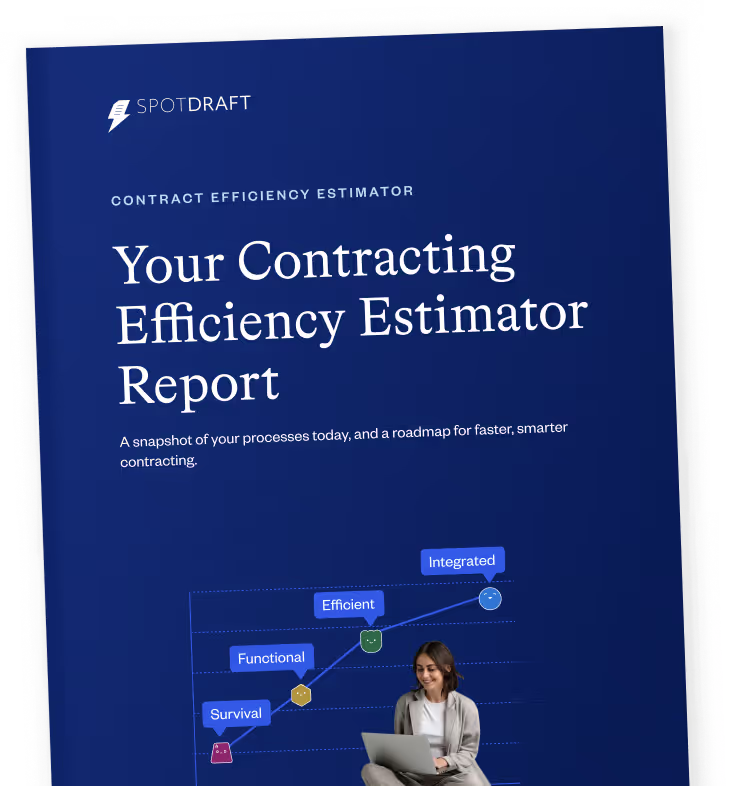Legal teams are drowning in regulatory updates while starving for actionable insights. The average in-house legal department tracks 50-200 regulations across multiple jurisdictions, generating thousands of updates annually. Yet current monitoring approaches – spreadsheets, email alerts, and manual review processes – are fundamentally inadequate for this volume and complexity.
Our research with legal teams across North America and Europe reveals a startling reality: 89% of in-house lawyers spend 3-8 hours per week just trying to stay current with regulatory changes [1]. That's up to 400 hours annually per lawyer spent on information processing rather than strategic legal work.
The result? Six-month backlogs of unreviewed updates, reactive compliance approaches, and legal teams trapped in administrative tasks when they should be driving business value.
Understanding the pitfalls of manual regulatory compliance monitoring

Here's the uncomfortable truth: the current approach to regulatory monitoring is fundamentally broken.
The staffing crisis in regulatory monitoring has reached critical proportions across all sectors. Only 29% of law firms and 41% of corporate legal departments [1] feel "very prepared" to address emerging compliance demands, while 44% of organizations still have no dedicated legal operations personnel [2] despite exponentially increasing regulatory workloads.
The volume of regulations doesn’t stop
The problem with regulations doesn't stop at volume. Each regulation can generate 5-15 updates per year, creating a tsunami of information that no human can effectively process. One general counsel told us, "I get updates almost every other day that require me to evaluate whether new legislation applies to us. It's unsustainable."
Not all regulations are relevant
Most regulatory updates aren't relevant to your specific business. Yet determining relevance requires significant legal expertise and business context.
One head of legal operations shared,
"We get broad updates from our Big Four firm, but they're mostly generic. Half of it is B2C consumer protection stuff that doesn't apply to our B2B model."
Context > Relevance
Even when updates are relevant, they rarely come with the business context needed to make decisions. The complexity multiplier effect is particularly evident in cross-jurisdictional operations. 137 out of 194 countries have implemented data protection laws, while 75% of countries maintain some form of data localization rule [3]. This creates conflicting jurisdictional claims over data
Legal teams must manually research how changes might affect contracts, policies, and business processes – a time-intensive exercise that often gets delayed due to other priorities.
It’s difficult to decide what to prioritize
Not all regulatory changes carry equal risk or urgency. But current monitoring systems treat a minor procedural update the same as a major compliance requirement, forcing legal teams to manually triage everything.
Here’s what a reactive approach to compliance costs you:
This manual approach creates several cascading problems that extend far beyond the legal department:
Strategic and financial drain
- The financial consequences are staggering. Organizations that fail to address regulatory monitoring challenges face $14-15 million in average non-compliance costs - nearly 2.71 times higher than compliance investment costs [4].
- Yet 76% of compliance managers still manually scan regulatory websites to track changes [5], a process that simply cannot scale with regulatory complexity.
Compliance time bombs
- Only 32% of organizations currently view themselves as effectively adopting technology to meet regulatory requirements [6], leaving a dangerous gap between available solutions and actual implementation.
- With regulatory backlogs stretching months, legal teams operate with imperfect knowledge of the current compliance landscape. This creates hidden risks that can explode without warning.
Business bottlenecks
- 80-90% of in-house legal departments report inadequate resources [7] for regulatory monitoring activities, while the volume of regulatory changes continues accelerating. The solution isn't more people - it's smarter processes powered by purpose-built technology that can automatically filter, prioritize, and contextualize regulatory changes for specific business needs.
- When regulatory questions arise during deal negotiations or product launches, legal teams often need hours or days to research and provide answers, slowing business velocity.
Forward-thinking legal departments are moving beyond manual monitoring toward what we call "regulatory intelligence" – a proactive, AI-powered approach that transforms how legal teams stay current with regulatory changes.
Intelligent filtering
Instead of receiving every update from every jurisdiction, regulatory intelligence systems filter information based on your specific business model, industry, and jurisdictions. This means seeing only the 5-10% of updates that matter to your organization.
Contextual analysis
AI can analyze new regulations against your existing contracts, policies, and business processes to identify specific areas of impact. Rather than generic updates, you receive targeted insights about what needs to change and why.
Risk-based prioritization
Advanced systems can assess the risk level and urgency of different regulatory changes, helping legal teams focus on high-impact items first while safely deferring lower-priority updates.
Proactive recommendations
The most sophisticated regulatory intelligence platforms don't just identify changes – they recommend specific actions, from contract clause updates to policy revisions, making compliance more actionable and less overwhelming.
What does intelligent regulatory monitoring look like?

Forward-thinking legal departments are moving beyond manual monitoring toward what we call "regulatory intelligence" – a proactive, AI-powered approach that transforms how legal teams stay current with regulatory changes.
Intelligent filtering
Instead of receiving every update from every jurisdiction, regulatory intelligence systems filter information based on your specific business model, industry, and jurisdictions. This means seeing only the 5-10% of updates that matter to your organization.
Contextual analysis
AI can analyze new regulations against your existing contracts, policies, and business processes to identify specific areas of impact. Rather than generic updates, you receive targeted insights about what needs to change and why.
Risk-based prioritization
Advanced systems can assess the risk level and urgency of different regulatory changes, helping legal teams focus on high-impact items first while safely deferring lower-priority updates.
Proactive recommendations
The most sophisticated regulatory intelligence platforms don't just identify changes – they recommend specific actions, from contract clause updates to policy revisions, making compliance more actionable and less overwhelming.
Also read: What is Contract Compliance? The Ultimate Guide
Here’s how we’re turning regulatory chaos into competitive advantage with Sidebar
While legal teams drown in regulatory updates, Sidebar transforms monitoring from manual crisis management into automated intelligence. Here's how it works in practice:
Instant impact, not information overload
When the SEC announces new climate disclosure rules, Sidebar doesn't just alert you—it immediately identifies which vendor contracts need updates and drafts compliant language. No more hours of research to determine relevance. Just precise, actionable guidance delivered instantly.
Real example: "Sidebar, what's the impact of the latest SEC climate disclosure rule on our contracts?"
Sidebar responds: "The SEC's new rule requires enhanced reporting on environmental risks. I recommend updating vendor contracts with a clause addressing ESG compliance. Should I draft a suggested clause for you?"
Your regulatory brain, not another tool
Sidebar integrates your contracts, policies, and negotiation history with real-time regulatory intelligence. When sales asks about GDPR requirements for a new EU customer, Sidebar instantly pulls current regulations, past similar deals, and your risk policies to provide contextual guidance, eliminating the delays that slow critical negotiations.
Built for legal teams, not retrofitted
Unlike generic AI tools, Sidebar uses legal-engineered prompts and understands contract structures. It works within your existing workflows (Slack, email) rather than forcing you to learn another platform. The result? Regulatory monitoring becomes a strategic advantage instead of an administrative burden.
The future is proactive
The legal departments that will thrive in the coming decade are those that embrace regulatory intelligence as a core capability. Instead of being overwhelmed by the volume of regulatory change, they'll be empowered by precise, actionable intelligence that enables proactive compliance and strategic decision-making.
This isn't about replacing human judgment – it's about augmenting human expertise with AI-powered intelligence that eliminates the mundane work of information processing and focuses legal talent on analysis, strategy, and business partnership.
Interested in understanding how Sidebar works? Join our waitlist to be among the first to experience AI-powered regulatory intelligence designed specifically for legal teams.
References:
1. Wolters Kluwer N.V.: Future Ready Lawyer Survey 2024: Legal professionals confident in managing AI-driven changes to business of law (Source)
2. Legal operations benchmarking; Impact of legal operations function (Source)
3. Cloud Data Sovereignty Governance and Risk Implications of Cross-Border Cloud Storage (Source)
4. The impact of non-compliance on businesses (Source)
5. State of Compliance Report Survey (Source)
6. Regtech 2024 Survey (Source)
7. FTI Consulting’s ‘The General Counsel’s Report 2025 (Source)


.avif)



.avif)



